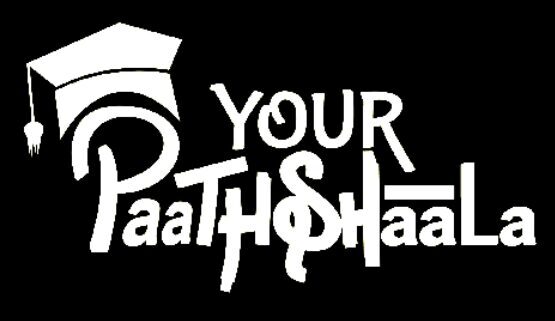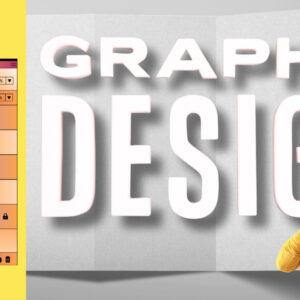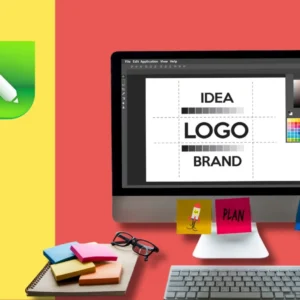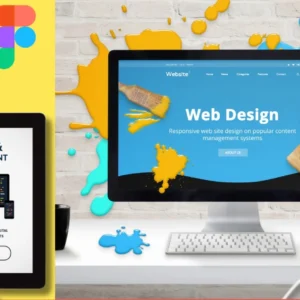
Pricing your graphic design work can feel tricky, especially in 2025’s fast-paced creative market. Whether you’re a freelancer or running a small studio, setting the right price is key to attracting clients and earning a fair income. But should you charge by the hour or per project? This guide breaks down graphic design pricing, comparing hourly and project-based rates with practical tips and examples. For example, we’ll explore how top designers price their work to win clients. Plus, we’ll provide a step-by-step guide to set your rates confidently. Ready to price smartly? Let’s dive into graphic design pricing and boost your earnings!
Why Graphic Design Pricing Matters
Setting the right price for your design work impacts your success. First, fair pricing reflects your skills and builds client trust. Next, it ensures you’re paid for your time and expertise. Additionally, proper pricing helps you stand out in a competitive industry. For instance, with the global design market projected to hit $249 billion by 2027, smart pricing can secure your place. However, pricing too low or too high can hurt your business. This guide will help you find the perfect balance for graphic design pricing.
Hourly vs. Project-Based Rates: The Basics
Graphic design pricing typically falls into two methods: hourly and project-based rates. Each has its strengths and challenges. Understanding both helps you choose the best approach for your work. Here’s a quick overview to get started.
Hourly Rates
Hourly rates charge clients based on the time you spend on a project. For example, if you charge $50 per hour and work 10 hours, the client pays $500. This method is great for flexible or unpredictable projects.
Project-Based Rates
Project-based rates charge a flat fee for the entire project, regardless of hours. For instance, you might charge $1,000 for a logo design. This method suits well-defined projects with clear deliverables.
Pros and Cons of Hourly Rates
Hourly rates are common in graphic design pricing, especially for beginners. But they have upsides and downsides. Let’s break them down to see if this method suits you.
Pros of Hourly Rates
- Flexibility: Adjusts to projects that change scope or take longer.
- Fair for Time: You’re paid for every hour worked, ideal for complex tasks.
- Transparency: Clients see exactly what they’re paying for based on time.
Cons of Hourly Rates
- Time Tracking: You must log hours accurately, which can be tedious.
- Client Pushback: Some clients dislike open-ended costs if projects run long.
- Income Cap: Your earnings are limited by the hours you can work.
For example, Creative Boom notes that hourly rates work well for freelancers tackling varied tasks like UI/UX or illustration.
Pros and Cons of Project-Based Rates
Project-based rates are popular for defined graphic design projects. They offer clarity but come with risks. Here’s a look at their benefits and challenges.
Pros of Project-Based Rates
- Clear Expectations: Clients know the cost upfront, building trust.
- Higher Earnings: You can charge based on value, not just time.
- Simpler Billing: No need to track hours, streamlining invoicing.
Cons of Project-Based Rates
- Scope Creep: Clients may request extra work without extra pay.
- Misjudging Time: Underestimating hours can lead to unpaid work.
- Complexity: Pricing complex projects accurately takes experience.
For instance, Wix suggests project-based rates for branding or logo projects with clear deliverables.
Factors to Consider
Choosing between hourly and project-based rates depends on several factors. These elements shape your pricing strategy in 2025. Consider the following to set fair rates.
Your Experience Level
Beginners often charge lower rates to build their portfolio. For example, new designers might charge $25-$50 per hour or $200-$500 per project. Experienced designers can charge $75-$150 per hour or $1,000-$5,000 per project, reflecting their expertise.
Project Complexity
Simple tasks like social media graphics take less time than full branding packages. For instance, a logo might take 5-10 hours, while a website redesign could take 20-40 hours. Adjust your rates based on the effort required.
Client Budget and Market
Research your client’s industry and budget. Small businesses may expect lower rates, while large corporations can afford premium pricing. For example, a startup might pay $500 for a logo, while a corporate client might pay $2,000.
Location and Demand
Rates vary by region and demand. In 2025, U.S. designers charge $50-$100 per hour on average, while global freelancers might charge $20-$60. High-demand niches like UI/UX often command higher rates.
Time and Resources
Consider software costs, research time, and revisions. For example, Adobe Creative Suite subscriptions or stock image fees add to your expenses. Factor these into your graphic design pricing to cover costs.
How to Set Your Graphic Design Pricing: A Step-by-Step Guide
Follow this beginner-friendly guide to set your rates confidently. It’s designed to help you price your work fairly in 2025.
1 Research Market Rates
- Check platforms like Behance or Dribbble for industry standards.
- For example, logo design rates range from $300-$2,000 in 2025.
- Look at local and global rates to find your range.
- Time: 1-2 hours
2 Assess Your Skills and Costs
- Evaluate your experience and niche (e.g., branding, UI/UX).
- Calculate expenses like software or taxes.
- For instance, beginners might start at $30/hour, while pros charge $80/hour.
- Time: 1 hour
3 Choose Your Pricing Model
- Decide between hourly or project-based rates based on project type.
- Use hourly for flexible tasks, like illustrations, and project-based for logos.
- However, test both to see what suits your workflow.
- Time: 30 minutes
4 Estimate Project Time
- Break down tasks (e.g., research, sketching, revisions).
- For example, a logo might take 8-12 hours, so price accordingly.
- Add a buffer for unexpected changes or client feedback.
- Time: 1-2 hours
5 Create a Pricing Proposal
- Present clear rates to clients with a breakdown of deliverables.
- Include scope, timeline, and revision limits to avoid scope creep.
- For instance, “Logo design: $800, includes 3 revisions.”
- Time: 1-2 hours
6 Test and Adjust Rates
- Start with a few projects and gather client feedback.
- Adjust rates based on demand or project complexity.
- Next, raise rates as you gain experience and confidence.
- Time: Ongoing
Total Time: 5-7 hours initially, then ongoing adjustments
Graphic Design Pricing Examples
Here are five hypothetical pricing examples to show how designers set rates in 2025. These are inspired by real-world trends.
- Logo Design (Project-Based)
- Designer: Mia, a beginner freelancer
- Rate: $400 flat fee
- Details: 8 hours of work, including 2 revisions
- Why It Works: Clear scope and flat fee appeal to small businesses.
- Website Redesign (Hourly)
- Designer: Leo, a mid-level UI/UX designer
- Rate: $60/hour, 30 hours ($1,800 total)
- Details: Includes wireframes, mockups, and testing
- Why It Works: Hourly rate suits complex, evolving projects.
- Branding Package (Project-Based)
- Designer: Zara, an experienced designer
- Rate: $2,500 flat fee
- Details: Logo, business cards, and style guide; 20 hours
- Why It Works: Value-based pricing reflects expertise.
- Social Media Graphics (Hourly)
- Designer: Eli, a part-time freelancer
- Rate: $35/hour, 10 hours ($350 total)
- Details: 10 Instagram posts with revisions
- Why It Works: Flexible rate suits quick, iterative tasks.
- Motion Graphics (Project-Based)
- Designer: Luna, a motion design specialist
- Rate: $1,200 flat fee
- Details: 30-second animated ad, 15 hours
- Why It Works: Fixed price simplifies billing for defined work.
Tips for Effective Graphic Design Pricing
To make your pricing strategy successful, follow these practical tips. They’re designed to help you avoid common pitfalls.
- Know Your Worth: Don’t underprice your skills. Research market rates to charge fairly.
- Set Clear Terms: Use contracts to define scope, revisions, and payment schedules. For example, limit revisions to avoid unpaid work.
- Communicate Value: Explain how your design solves client problems. For instance, a logo boosts brand recognition.
- Offer Packages: Combine services (e.g., logo + business cards) for higher-value projects.
- Raise Rates Over Time: As you gain experience, increase rates to match your expertise.
Common Pricing Mistakes to Avoid
Pricing errors can hurt your business. Here are mistakes to steer clear of in graphic design pricing. First, avoid undercharging to win clients; it devalues your work. Next, don’t skip contracts, as they prevent scope creep. Also, avoid vague estimates; always clarify deliverables. Finally, don’t stick to one pricing model if it doesn’t suit the project. For example, hourly rates may not work for fixed-scope tasks like logos.
Tools to Help with Graphic Design Pricing
- Invoicing Tools: FreshBooks, Wave, PayPal for easy billing
- Time Tracking: Toggl, Clockify for hourly rate accuracy
- Market Research: Behance, Dribbble for rate comparisons
- Contracts: Bonsai, HelloSign for clear agreements
- Cost Calculators: MyPrice, Freelance Rate Calculator for quick estimates
Graphic Design Pricing Trends in 2025
In 2025, graphic design pricing reflects industry shifts. Creative Boom notes that value-based pricing is growing, with designers charging for impact, not just time. X posts highlight rising demand for UI/UX and motion design, pushing rates to $75-$150/hour for specialists. Meanwhile, Webflow suggests project-based rates for branding packages, averaging $1,000-$5,000. Additionally, AI tools are streamlining workflows, allowing designers to charge more for creative expertise. Staying updated on these trends ensures your graphic design pricing remains competitive.
Conclusion
Pricing graphic design work in 2025 doesn’t have to be daunting. By understanding hourly vs. project-based rates, you can choose the best method for your projects. Use our step-by-step guide to research rates, assess your skills, and create clear proposals. For example, start with market research and adjust as you grow. Avoid common mistakes like undercharging or vague terms. With the right graphic design pricing strategy, you’ll attract clients, boost earnings, and build a thriving career. Ready to set your rates? Start pricing smartly today! Want to learn graphic designing through practical, hands-on training? Join YourPaathshaala, Raipur’s leading skill development institute. Contact us at 📞 +91-8305209520 for more information!








Add a Comment